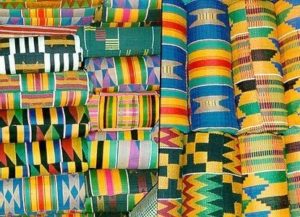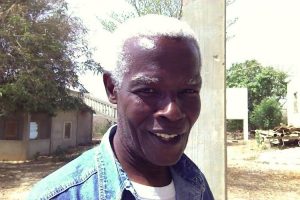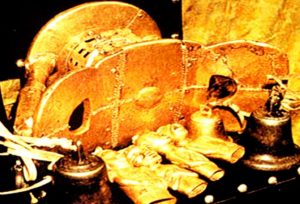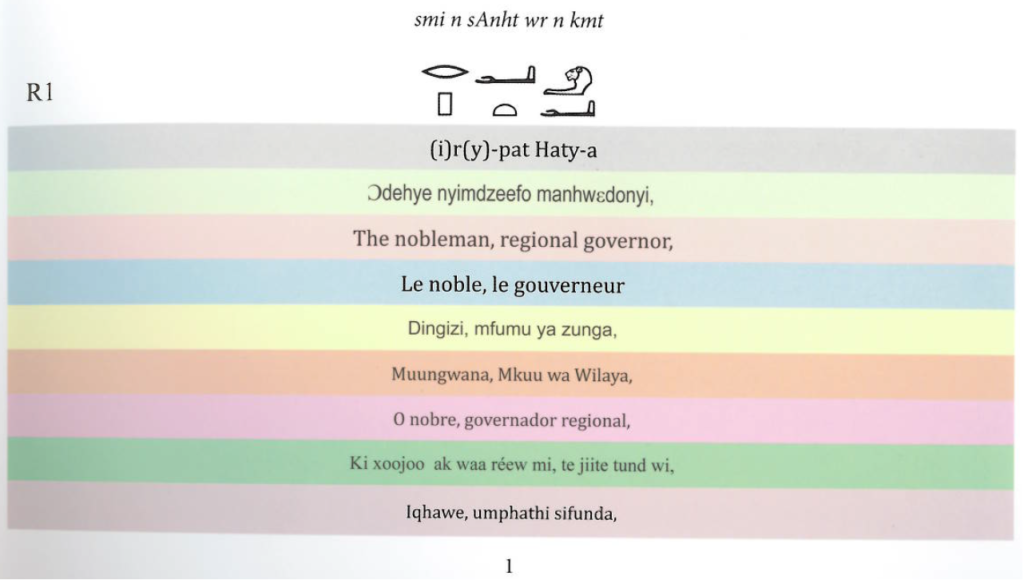
So, after reading the works of Cheik Anta Diop (e.g. The African Origin of Civilization; Black Africa – The Economic and Cultural Basis for a Federate State), Chancellor Williams (e.g. The Destruction of Black Civilization) and the works of several other elders and seniors including Molefi Kete Asante (The History of Africa – The Quest for Eternal Harmony), I am more and more coming to the conclusion that one way to connect to our past is to learn more about the languages and the civilization of Nubia and Kemet/Egypt.
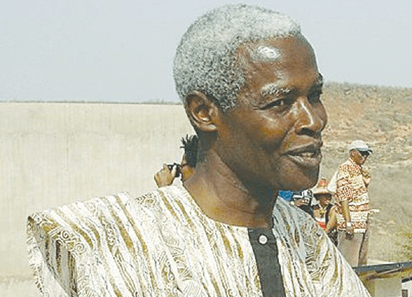
One individual who I think has been working quietly in the background, quietly building a legacy of knowledge and reconnecting us with the ancestral link, is Ayi Kwei Armah. In the early days, when Ayi Kwei Armah wrote The Beautiful Ones Are Not Yet Born, he received such critical acclaim in academic circles. Two other novels he wrote, Two Thousand Seasons, and The Healers, also gained widespread attention. And then things changed. You search for Ayi Kwei Armah online, and there is little talk about his new work that has received the kind of attention and acclaim that his oldest works received. So, what happened to him since these three novels?
I will tell you what happened. I think that it is not because this most brilliant Fante man suddenly “lost his intellectual mojo” and chose not to write any longer. Quite the opposite. Rather, I think that this elder seriously realized what Diop and Williams and several others who came before him also figured out, and he chose to do something about it. He figured out that there is work to be done! That work involves reconnecting us with our ancestral past, far beyond the limits of smaller African groups and the medieval African empires, to the roots of our high cultures in the ancient past. He is working to reclaim and re-establish our memory with the far past, in the culture of ancient Kemet/Egypt. This work involves reawakening the ancestral link to the ancient culture. It involves retracing our roots into the far past, in order for us to proceed bravely into our future.
So, Ayi Kwei Armah has been working on reviving the core of the history and the identity of black people by reclaiming the language and some of the achievements of the ancient civilization of Kemet. This is what I think is the case.
I have been keeping up with Ayi Kwei Armah’s work. Over a decade ago, I read Two Thousand Seasons and The Healers. Both books are deep attempts at helping our current generation reconnect with the past we have lost as a result of a fractured culture. After reading these two, I also read The Resolutionaries, and Remembering the Dismembered Continent.
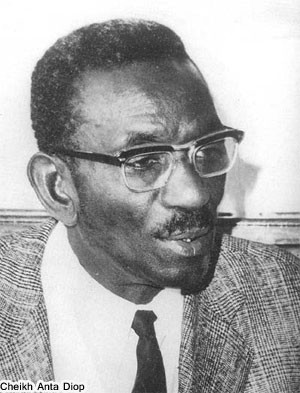
But it is his newer work that I would like to highlight in this article. In this newer work, Ayi Kwei Armah is pushing the vision of Cheik Anta Diop by making works in the Medu (i.e. Egyptian hieroglyphs) that were written thousands of years ago available to this generation. In Africa/Merita/Ta Meri, we have a language problem. Because there are so many indigenous groups, all speaking different languages, we don’t have a common African language by which to speak among ourselves in contemporary times. We communicate among ourselves with the European (colonial) languages English, French, and Portuguese. So much so that Akan people in Ghana are closer to Yoruba people in Nigeria than to Akan people in Cote d’Ivoire, simply because Ghanaians and Nigerians communicate in English which people in Cote d’Ivoire communicate in French. Francophone Africans speak with Francophone Africans, while Anglophone Africans do likewise.
We Africans have a glorious past that most are not even aware of. A high culture that lasted thousands of years, and whose language is still accessible, even though it is now not widely used. It is up to us to connect with our past culture. Someone once said that language is the DNA of culture. We need to work on developing a common denominator. The Medu can be this denominator. We need it, in order to decolonize our minds and to set us back to the ancestral link that was broken through invasions and conquest of the Nile valley cultures. This is what Ayi Kwei Armah has been working on.
Cheik Anta Diop showed the connection of African peoples to this culture. Chancellor Williams presented a lucid argument to the effect that the pre-dynastic Egyptian culture and the first dynasties were led by black pharaohs. Pharaoh Menes, founder of the first dynasty united upper and lower Egypt over 5,000 years ago. This same feat was repeated by Pharaoh Menuhotep II, sixth ruler of the 11th dynasty, and it was also repeated over 2000 years later by Pharaoh Piye/Piankhi, founder of the 25th dynasty, who ruled upper and lower Egypt as well as Nubia. All three were black pharaohs (among many others over the course of Egyptian history). Not many people know this.
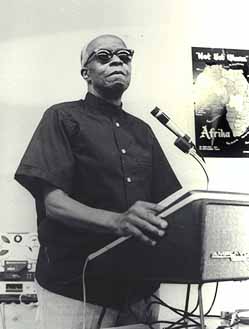
In other words, black people have been using the Medu for A LONG TIME. You won’t find it commonly said that some of the earliest evidence of writing Egyptian hieroglyphs comes from the Naqada culture, and that the earliest cultures in pre-dynastic Egypt – Thinis, Naqada, and Nekhen, were all black cultures. These were cultures that preceded Menes, founder of the first dynasty who united lower and upper Egypt 5,000 years ago.
So basically, blacks took up the hieroglyphs as their writing at the very start. It is no surprise then, that some traditional African secret societies around the continent still use writing that is hieroglyphic in nature. This is true in West Africa as well as in Southern Africa.
People talk about ancient cultures. I have traveled to India. I have traveled to China. I have traveled to Greece. I have traveled to Italy. The people of these parts speak proudly of their ancient cultures: Vedic, Han, Hellenic, and Roman. Yet Africans are inheritors of one of the most ancient and greatest cultures of all, and many are scantly aware of it.
Yes, some of the knowledge “gatekeepers” of today complain and refute the notion that the early pharaohs in Egypt were black, and that there were black pharaohs at several different periods over the long course of Egyptian history. The evidence is clear that there was. And even if we grant the notion that Egypt was not always ruled by black pharaohs, the same cannot be said of Nubia. Some archaeological evidence, the Nabta Playafor example (subject of the book Black Genesis – The pre-Historic Origins of Ancient Egypt) points to habitation in Nubia 12,000 to 14,000 years ago). Larry Ross, in his book Nubia and Egypt – 10,000BC to 400 AD provides further archaeological evidence of continual habitation in the region.
All that to say, black civilization is very old, and much older than most black and non-black people know. When we think of ancient cultures, we think of India and China, and yes those are ancient. But so are the ancient cultures of Nubia and Egypt. For civilizations that old, it is no surprise that they reached a high point and also developed all aspects of civilization.
We need a pan-African language that will serve as a unifying factor
Coming back to the point about language, in his book Black Africa – The Economic and Cultural Basis for a Federate State, Cheik Anta Diop asserts that “While we may be able to build a Federated African State covering all of the Black Continent on the basis of historical, psychological, economic and geographical unity, we will be forced, in order to complete such national unity, and set it on a modern autochthonous cultural base, to recreate our linguistic unity through the choice of an appropriate African tongue promoted to the influence of a modern cultural language. Linguistic unity dominates all national life.” (pp. 7 – 8).
I cannot agree more, and in fact the “language problem” has been one that has plagued African nations during pre and post-colonial periods. For real African unity to occur, there must be genuine unifying factors. I think language is one main factor. Rather than select an existing African language, I think it would be wise to rather return to our roots and reconnect ancestrally with our original language, the Medu (i.e. Egyptian hieroglyphs), and then build it into a modern language. It will not be an overnight affair. It will require a period of transition, wherein we use African and European languages to help us master the Medu, and bring it from a language of the past, to a modern cultural language.
I have never spoken to Ayi Kwei Armah (at least, not yet in this present incarnation), but my hunch is that his project is among other things addressing this core issue. We NEED an African language as a unifying factor.
As I said, I have been to India and to China. In China, there are several indigenous groups. What brings them together is a common language and a common culture. The Qin dynasty came into being around 220 BC and in so doing united China for the first time. Chandragupta Maurya first united all of India around 320BC. Menes was the first in recorded history to unite upper and lower Egypt. That happened around 3200BC, so almost 3000 years before either India or China did the same. Come on, black people! If we have done it before, we can do it again. It’s a pity many of us don’t know our own ancient culture. But now we have little to no excuse to hide behind ignorance. The elders and seniors who came before us, the likes of Chancellor Williams and Cheik Anta Diop, have done the legwork to pave the way forward. And this is going to be a generational project.
So, let’s now proceed to the work Ayi Kwei Armah and his group are doing. Here is what Armah wrote in the introduction to SaNhat, an ancient story from Kemet: “Ask an African, an Asian, and a European to recount the oldest story they know from their literary tradition. The European may cite the Odyssey or the Illiad, three-thousand year old Homeric texts from Greece. The Asian might cite a 6th century BC text from Confucius. But the African’s memory may reach back only a few centuries to an oral tradition. This debilitating intellectual syndrome – the unnaturally short historical memory crippling African intellectuals – was a European colonial invention, a result of the racist doctrine according to which Africa had no history, literature or philosophy, no intellectual heritage except what invading Europeans brought…”
You can read the rest. I highly recommend reading the remainder of this introduction. Actually, the story that Armah makes available is called SaNhat, and it dates back to almost 2,000BC, so about 4,000 years ago. I am going to make the introduction to his book, and only a few pages of the translation of SaNhat available to the public. If you want the full book, you can support Aki Kwei Armah and his group and purchase directly from them.
The purpose of revealing the first few pages of the translation of SaNhat is for the public to see what Ayi Kwei Armah and his group are doing. They are basically translating the Medu and adding African and European languages underneath. This way, the Medu text can be read in the Akan, Kikongo, Kiswahili, Wolof and Zulu languages as a few examples, in addition to translations in English and French. In my opinion, this is a brilliant way to bring the memory of the past to the present time. Once you download the PDF below, and are ready to view it, just make sure to rotate it 90 degrees clockwise, as its current orientation does not allow for easy reading.
So, people, get on with learning the Medu (i.e. the hieroglyphs of Ancient Egypt). Also find and read the Ancient Egyptian texts that have already been translated into modern languages. There are several ways to go about learning the Medu. Find a way that works for you, and make it happen. If you are at a college, take a course. Otherwise you can find a course online or do a self-study on Middle Egyptian as a start. There are books by black and non-black intellectuals on this subject, so it should not be difficult to find a means to access study material.
References
The African Origin of Civilization: Myth or Reality [Google scholar][Amazon]
Parenté génétique de l’égyptien pharaonique et des langues négro-africaines: processus de sémitisation [Google scholar]
Nations nègres et culture: de l’antiquité nègre-égyptienne aux problèmes culturels de l’Afrique noire d’aujourd’hui [Amazon]

